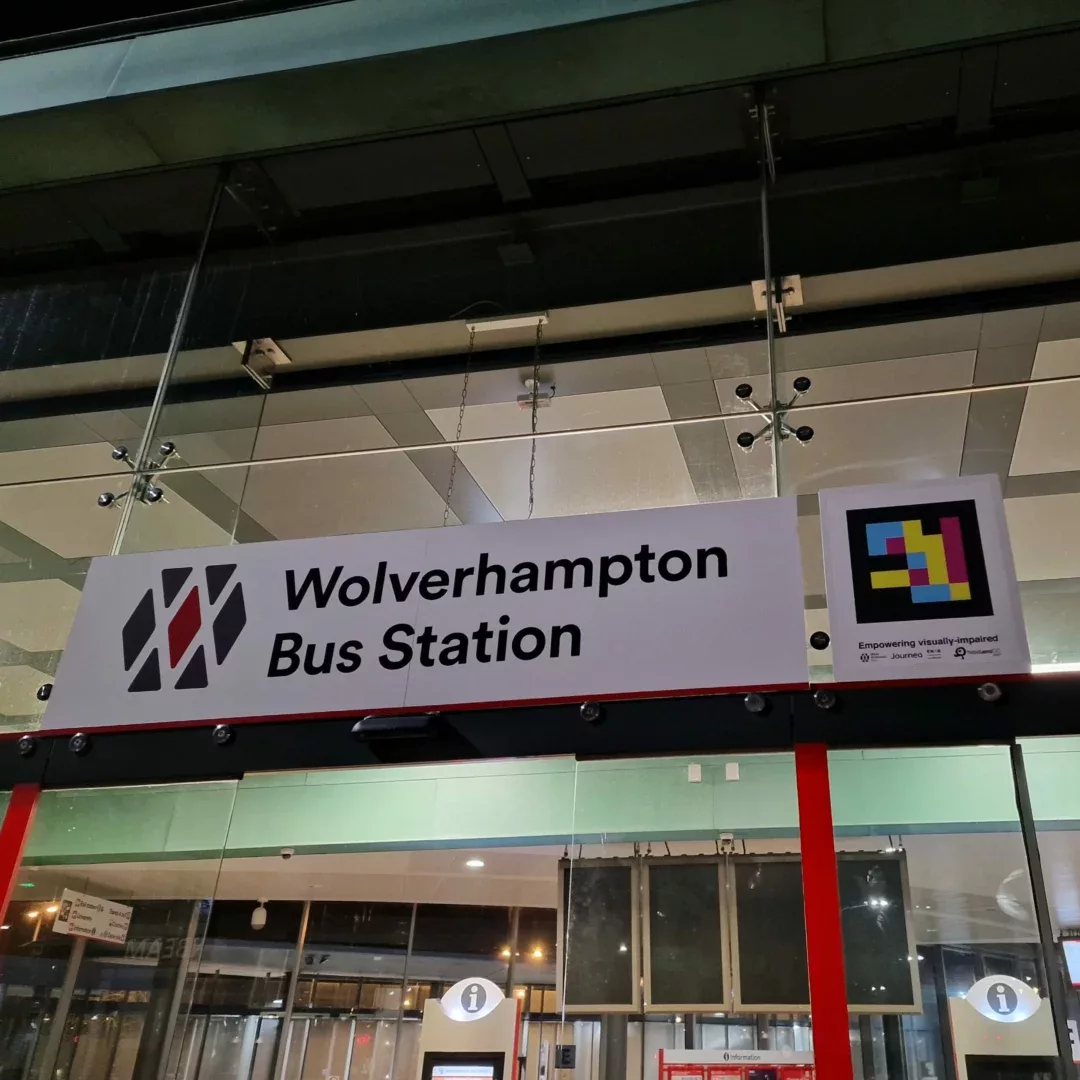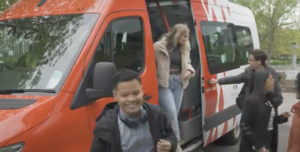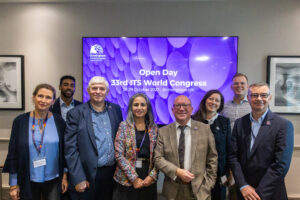Wolverhampton has become one of the UK’s most accessible bus stations after joining New York and Barcelona in testing the latest, inclusive technology.
Transport for West Midlands has unveiled new smart codes at Wolverhampton Bus Station, giving passengers immediate access to wayfinding details and live travel information on their mobile phones.
The six-month trial is part of a regionwide strategy by TfWM, which is part of the West Midlands Combined Authority, aimed at “improving accessibility, create a fairer society and tackle the climate emergency”.
Steven Hayes, TfWM’s head of network transformation, said: “It’s crucial that everyone, regardless of their personal circumstances, can easily access and use our region’s public transport.
“That’s why we spend tens of millions of pounds each year providing concessionary travel for older people, children and people with disabilities as well as millions more on accessible transport more generally.
“Good public transport that quickly connects people to work, education, training, health and leisure destinations is a key part of our wider strategy to build a low carbon, more inclusive economy that gives people greater opportunities to improve their skills, find better jobs and secure good quality, affordable homes.
“We are looking forward to working with NaviLens to see how these new smart codes can further improve accessibility for everyone using the transport network.”
The NaviLens codes are implemented to make the bus station smarter and more inclusive. Using free apps (NaviLens and NaviLens Go) and the camara on a phone, codes are detected automatically, and the details presented to a user on screen or read aloud.
For blind and partially sighted passengers, NaviLens codes present an accessible alternative to traditional signage providing context and ability to independently navigate the station.
Sighted passengers can equally benefit from using NaviLens codes to navigate the station, including automatically translating station information in more than 30 languages.
At Wolverhampton the codes are installed at floor level decision points along the tactile path, providing timely and relevant wayfinding information. Codes are also positioned on walls at all points of interest providing context and improved situational awareness.
This combination enables personalised directions around the station, details of how to access and use amenities together with real time departure information for every bay and bus service.
The colourful tags can be picked up by a phone camera at long distances without the need to know where they are, this can be done whilst moving and several can be scanned at once providing context on route. This enables all passengers to independently access relevant and timely information within the station.
Raúl Moreno, head of strategic project at NaviLens, said: “We’re delighted to work with TfWM to bring this solution to Wolverhampton Bus Station. This is a comprehensive trial that helps us develop the technology and deliver benefits to visitors and passengers in the West Midlands.”
John Worsfold, RNIB solutions innovation lead, explained: “Travel is an essential part of everyday life and we are delighted to have the opportunity to collaborate with industry partners pioneering scalable solutions that empower blind and partially sighted passengers to travel independently.
“This project uses NaviLens technology which has been specifically designed to enable blind and partially sighted people to be able to access and locate information and interact with the environment around them.”
Kim Bradley, group projects manager at Journeo, said: “It’s been a pleasure to support this project and integrate real time journey information into the NaviLens codes at Wolverhampton Bus Station.
“Combining these technologies will increase everyone’s confidence and encourage more people to choose the bus, which is essential for communities across the UK to meet their carbon, health and transport goals.”
The trial at Wolverhampton Bus Station is scheduled to be in place until September.
(Picture – WMCA)























